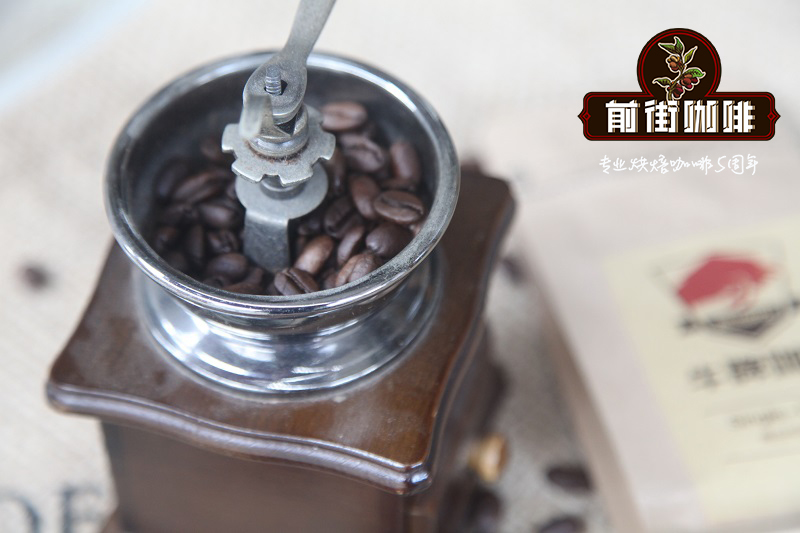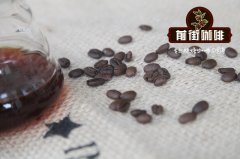The way of coffee and bean honey treatment? The taste of black honey treatment? How many kinds of coffee honey are treated?

Professional coffee knowledge exchange more coffee bean information please follow the coffee workshop (Wechat official account cafe_style)
The way of coffee and bean honey treatment? The taste of black honey treatment? How many ways are there to treat coffee honey?
Coffee is a kind of agricultural products, and "fresh" is one of the indispensable elements of good coffee.
When buying coffee beans, you will often see the words "Washed", "Natural" or "Honey". These are the ways to treat raw coffee beans, that is, the way they are dried. What exactly does it mean? How does it affect the flavor of coffee?
A brief talk on the treatment of raw beans
It is the baker's responsibility to choose high-quality raw beans, just like chefs who want to choose fresh fish, vegetables and fruits. Without good fresh ingredients, it is difficult for a good cook to make a good dish. Raw beans are "agricultural products" picked and dried by coffee-producing areas. And the coffee beans (cooked beans) we drink are the baked food of this agricultural product. Here, I hope you must remember that coffee is a concept of agricultural products. So, to put it simply, determining the flavor of coffee depends on the quality of raw beans, drying, proper roasting and proper brewing. Let's first take a look at the composition of raw coffee beans:
Raw bean profile
When the coffee is ripe, the outermost skin turns crimson (with the exception of a few varieties), and the pulp is unexpectedly sweet to eat directly. Finally, the "coffee seeds" covered by the sheep cortex and silver cortex are the coffee raw beans we usually refer to.
Now that we know the composition of raw coffee beans, it is easier to understand how to handle them. The following three methods are more common:
NATURAL by solarization
As the name implies, it is the way to use sunshine to dry coffee fruits (coffee cherries).
The harvested coffee fruit is exposed to the sun, and then the dried peel, pulp and silver skin are removed. Remove the coffee beans from the inside. The flavor of the sun has soft acidity, hierarchical, fermented flavor and high sweetness, which belongs to the most traditional treatment. The sun-treated beans of general quality are not beautiful and are easy to be mixed with immature and defective beans. And good quality sun beans, with ripe fruit, wine aroma, rich flavor levels.
Washing WASHED
Put the harvested coffee cherries into the pulp separator, separate the pods from the pulp, and then put the pods into a clean tank for fermentation (honey treatment, without this step) to remove pectin from the upper layer of the pods and dry them in the sun. In this way, the flavor of coffee beans is relatively clear and clean, and the acidity of the coffee beans is high (because they do not bring the flesh with them to dry together). )
Honey-treated HONEY
Honey treatment, like its name, is more obvious in sweetness.
The honey treatment is to intercept the raw beans washed with water halfway, and not to enter the fermentation process, but directly bring pectin / pulp for exposure. This treatment reduces acidity, increases sweetness and BODY (thickness), also has fruity aromas and improves cleanliness than sun-dried beans.
See the coffee bean treatment methods such as "white honey treatment" or "yellow honey treatment", which depends on how much pectin pulp the raw beans retain after exposure. Exposure with 80% pulp is called "black honey"; with 60% pulp is "red honey"; and retaining 40% pulp is called "yellow honey" treatment; with 20% pulp is called "white honey" treatment. Flavor, with more flesh for exposure, such as black honey red honey, the flavor will be closer to the sun treatment, high sweetness, sufficient fruit aroma, on the contrary, with less pulp, such as white honey treatment, cleanliness will be better, also has a higher sweetness than the general water-washed beans. The common producing countries of honey treatment are located in Central America, Costa Rica or Panama, etc., with good and stable quality. If you want to combine the cleanliness and freshness of washing and the sweetness of the sun, honey treatment is a good choice in your cup.
Important Notice :
前街咖啡 FrontStreet Coffee has moved to new addredd:
FrontStreet Coffee Address: 315,Donghua East Road,GuangZhou
Tel:020 38364473
- Prev

What are the steps in the process of coffee and bean honey treatment? What is the difference in flavor and taste between washing and sun treatment?
Professional coffee knowledge exchange more coffee bean information please follow the coffee workshop (Wechat official account cafe_style) coffee bean honey processing process? What are the steps of coffee and bean honey treatment? What's the difference between washing and tanning? Treatment can be divided into three categories: dry treatment, wet treatment and semi-dry treatment.
- Next

What are the coffee bean honey processing methods? Coffee honey drying process? Coffee Bean Honey
Professional coffee knowledge exchange More coffee bean information Please pay attention to coffee workshop (Weixin Official Accounts cafe_style) What are the methods of coffee bean honey treatment? Coffee honey drying process? Coffee beans honey processing suitable for what kind of coffee? Coffee cherries are bright red when ripe, and because they look like cherries, they are also called coffee cherries.
Related
- Detailed explanation of Jadeite planting Land in Panamanian Jadeite Manor introduction to the grading system of Jadeite competitive bidding, Red bid, Green bid and Rose Summer
- Story of Coffee planting in Brenka region of Costa Rica Stonehenge Manor anaerobic heavy honey treatment of flavor mouth
- What's on the barrel of Blue Mountain Coffee beans?
- Can American coffee also pull flowers? How to use hot American style to pull out a good-looking pattern?
- Can you make a cold extract with coffee beans? What is the right proportion for cold-extracted coffee formula?
- Indonesian PWN Gold Mandrine Coffee Origin Features Flavor How to Chong? Mandolin coffee is American.
- A brief introduction to the flavor characteristics of Brazilian yellow bourbon coffee beans
- What is the effect of different water quality on the flavor of cold-extracted coffee? What kind of water is best for brewing coffee?
- Why do you think of Rose Summer whenever you mention Panamanian coffee?
- Introduction to the characteristics of authentic blue mountain coffee bean producing areas? What is the CIB Coffee Authority in Jamaica?

